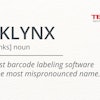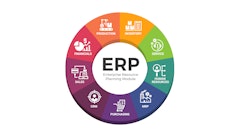
There’s been a growing spotlight on ultra-processed food (UPF), with consumers questioning preservatives and their role in extending shelf life.
A BMJ study found consistent evidence linking UPF consumption to 32 adverse health outcomes. Preservatives (like sodium benzoate, nitrates, sorbates) comprise a part of UPF, and they extend shelf life by slowing microbial growth or preventing spoilage. Even when regulators deem them safe, for many consumers, preservatives have become symbolic of ‘unnatural’ or ‘industrial’ processing.
This consumer sentiment has encouraged some brands to reformulate their products with shorter ingredient lists and natural alternatives; but this typically means shorter shelf lives. And when it comes to supply chains, shorter shelf lives mean tighter production and logistics windows, higher risk of waste – if demand is misjudged – and more pressure on supply chain accuracy and responsiveness.
Yet if manufacturers move away from preservatives, what’s the alternative?
Operational bottlenecks in food manufacturing
Food production is full of variability. Demand forecasts continually shift, unexpected supply chain disruptions can take place, and production capacity fluctuates – and all of this happens at once. In traditional operations, this sets off a range of manual decisions to take place across several departments: inventory managers need to reallocate stock, procurement teams have to amend orders, and production planners have to reschedule timings.
But with shelf life reduced, a far higher level of accuracy and efficiency is needed with decision-making. With food not lasting as long, companies might be tempted to either hold more stock than necessary (to avoid missed sales) or less stock than necessary (to reduce waste). Yet both have the pitfall of the other: holding too much stock leads to unnecessary waste and higher purchasing, storage and operational costs; too little leads to supply chain delays and missed sales. Both impact revenue and costs.
So, how can companies perfect this balancing act to achieve optimal stock levels? It rests on gaining a real-time visibility of food, ingredients and demand and supply levels across the network; and optimizing supply chain decisions. And for that, you need AI.
AI-powered inventory management enables food companies to optimize their stock and manage shorter shelf lives without compromising on service. Ultimately, this means they can balance consumer demands with operational resilience.
AI-optimized inventory visibility
The difference between traditional inventory platforms and AI-powered ones is the latter’s ability to offer dynamic inventory capabilities – this allows food manufacturers to react to sudden supply and demand shifts, accurately forecast demand, or, in this case, adapt to shorter shelf-life dates.
AI analyses a whole stream of data like stock levels, sales and product availability – coupled with the costs of holding different amounts of stock – to suggest optimal inventory levels at each location (i.e. warehouse). This builds live visibility across supply chains, giving manufacturers accurate insights into stock levels, ingredient freshness and usage patterns.
With fewer preservatives, products have tighter expiry windows. AI insights can help planners adjust production schedules, replenishment cycles, and logistics to ensure goods reach shelves while still fresh. Crucially, this enables them to reallocate food to other stores where there is demand or readjust orders for locations where less stock is needed.
Manufacturers can also use predictive AI models to anticipate demand surges or seasonal shifts and adapt quickly. Smarter forecasting, for instance, reduces the risk of overproduction, which often leads to food waste. Simultaneously, better demand sensing lowers the chance of underproduction, avoiding stockouts that disrupt customer trust and retailer relationships.
AI can balance these trade-offs by learning from past sales, external data (such as weather or promotions), and real-time consumption patterns and match these with the shelf-life dates of different ingredients. This significantly reduces reliance on manual forecasting and helps align production more closely with actual demand.
But is there now a world where manual decision-making is even less of a requirement?
Agentic AI is changing the game
The most advanced inventory optimization platforms still rely on humans for making key everyday decisions and actions, like issuing POs, and coordinating stock and resources allocation. It’s a bottleneck in achieving true manufacturing autonomy.
But the arrival of agentic AI is set to change this completely. Many major tech leaders predicted 2025 as the year we would see AI agents come to the fore. AI agents are essentially virtual assistants – and the key difference from previous AI models is that they can take the initiative and act with autonomy.
So, rather than following pre-determined logic to analyze data and suggest optimal stock levels, for example, AI agents can perform tasks normally carried out by humans: they could automatically adjust safety stock parameters based on changes in supply constraints, update productions schedules in line with disruption, or redistribute inventory across warehouse or store locations based on real-time demand data and wider supply chain conditions.
Therefore, while AI still performs the demand forecasting and inventory optimization steps, agentic AI can automatically execute the actions normally requiring human input and decisions. This is transformative for how efficiently and accurately manufacturers can work. Agents can work monitoring the supply chain 24/7, and can take corrective actions at speed, reducing decision times, increasing organizational agility and speed.
With the removal of preservatives significantly reducing the shelf life of certain products, this speed of execution could make a huge difference in improving the quality and freshness of food sold to customers.
A(I) world without preservatives?
The use of UPF and preservatives is under the spotlight. But with so many variables in food manufacturing and supply chains to manage, if brands are to move away from preservatives, technology, and specifically, AI, has to be a fundamental tool.
AI gives manufacturers dynamic inventory capabilities and thereby allows them to predict demand, mitigate expensive overproduction and reduce wasted out-of-date products. By suggesting optimal inventory levels for various locations, the technology can improve efficiencies throughout the production pipeline, building increasingly streamlined operations and better service levels.
For ingredients with a shorter shelf-life date, this efficiency is paramount. And now, the arrival of AI agents is set to provide a whole new level of autonomy to AI models and the automated capabilities of food manufacturers to action optimal inventory levels, resource allocation, and production schedules.
In a world where consumer sentiment runs deep, alongside the many health impacts of UPF, keeping food as natural and as fresh as possible can only be a good thing. AI presents food companies with a major opportunity to produce products without the need for preservatives.




















